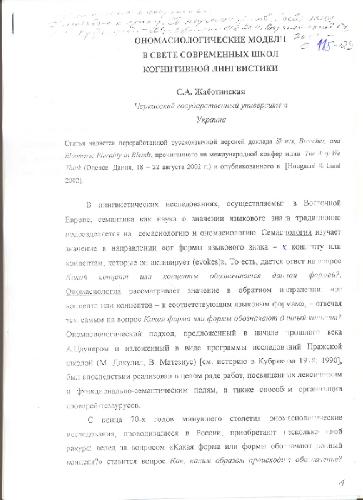- 2 402 202 книги
- Поиск
libcats.org









The Structure of Scientific Revolutions
Thomas S. KuhnIf you have an interest in purchasing this book, then you already know that it contains many groundbreaking concepts, the most important of which is the paradigm shift, which has relevance way beyond the world of science.
This is the import of the book: while reading it, one begins to realize that as thorough and referenced it may be, it remains a very metaphoric model for the march of history within almost all disciplines, where the world of imagination somehow transforms our collective view and consequent mode of perception and action in all areas of life.
I, who am a musician by trade, had a particularized need to use the book to help understand the 20th century and its zeitgeist, post WWII especially. The world of science was, for that century, a seductive one and people of retentive intelligence found themselves enamored of its methods in their search for meaning post-holocaust and post-Hiroshima-Nagasaki.
As I sit at a computer in Japan writing this, the job of the 21st Century must be to begin to make sense of our collective recent history and to find the common threads that connect us all on the planet in constant global discussion on present issues as they present themselves.
The search for fresh perspectives is the real stuff of great science and we should feel compelled to race forward in search of them concerning our past. History will teach us, if we can understand and supercede it, as described so beautifully in Tom Kuhn's masterpiece.
This is the import of the book: while reading it, one begins to realize that as thorough and referenced it may be, it remains a very metaphoric model for the march of history within almost all disciplines, where the world of imagination somehow transforms our collective view and consequent mode of perception and action in all areas of life.
I, who am a musician by trade, had a particularized need to use the book to help understand the 20th century and its zeitgeist, post WWII especially. The world of science was, for that century, a seductive one and people of retentive intelligence found themselves enamored of its methods in their search for meaning post-holocaust and post-Hiroshima-Nagasaki.
As I sit at a computer in Japan writing this, the job of the 21st Century must be to begin to make sense of our collective recent history and to find the common threads that connect us all on the planet in constant global discussion on present issues as they present themselves.
The search for fresh perspectives is the real stuff of great science and we should feel compelled to race forward in search of them concerning our past. History will teach us, if we can understand and supercede it, as described so beautifully in Tom Kuhn's masterpiece.
EPUB | FB2 | MOBI | TXT | RTF
* Конвертация файла может нарушить форматирование оригинала. По-возможности скачивайте файл в оригинальном формате.
Популярные книги за неделю:

Проектирование и строительство. Дом, квартира, сад
Автор: Петер Нойферт, Автор: Людвиг Нефф
Размер книги: 20.83 Mb

Система упражнений по развитию способностей человека (Практическое пособие)
Автор: Петров Аркадий НаумовичКатегория: Путь к себе
Размер книги: 818 Kb

Сотворение мира (3-х томник)
Автор: Петров Аркадий НаумовичКатегория: Путь к себе
Размер книги: 817 Kb

Радиолюбительские схемы на ИС типа 555
Автор: Трейстер Р.Категория: Электротехника и связь
Размер книги: 13.64 Mb

Момент истины (В августе сорок четвертого...)
Автор: Богомолов Владимир ОсиповичКатегория: О войне
Размер книги: 1.83 Mb
Только что пользователи скачали эти книги:

William W Johnstone - Ashes 19 - Treason in the Ashes (txt)
Автор: Johnstone William W
Размер книги: 446 Kb

Ономасиологические модели в свете современных школ когнитивной лингвистики
Автор: С.А.Жаботинская
Размер книги: 6.54 Mb

Энциклопедический словарь Ф. А. Брокгауза и И. А. Ефрона в 86 томах. Тома 13-24
Автор: под редакцией К. К. Арсеньева и Ф. Ф. Петрушевского
Размер книги: 49.74 Mb

The Apoplast of higher plants: Compartment of Storage, Transport and Reactions: The significance of the apoplast for the mineral nutrition of higher plants
Автор: Burkhard Sattelmacher (Editor), Автор: Walter J. Horst (Editor)Категория: Математика, Прикладная математика
Размер книги: 10.61 Mb



/cover.jpg)